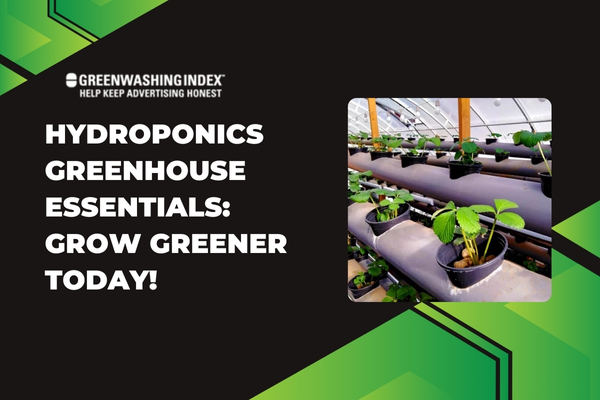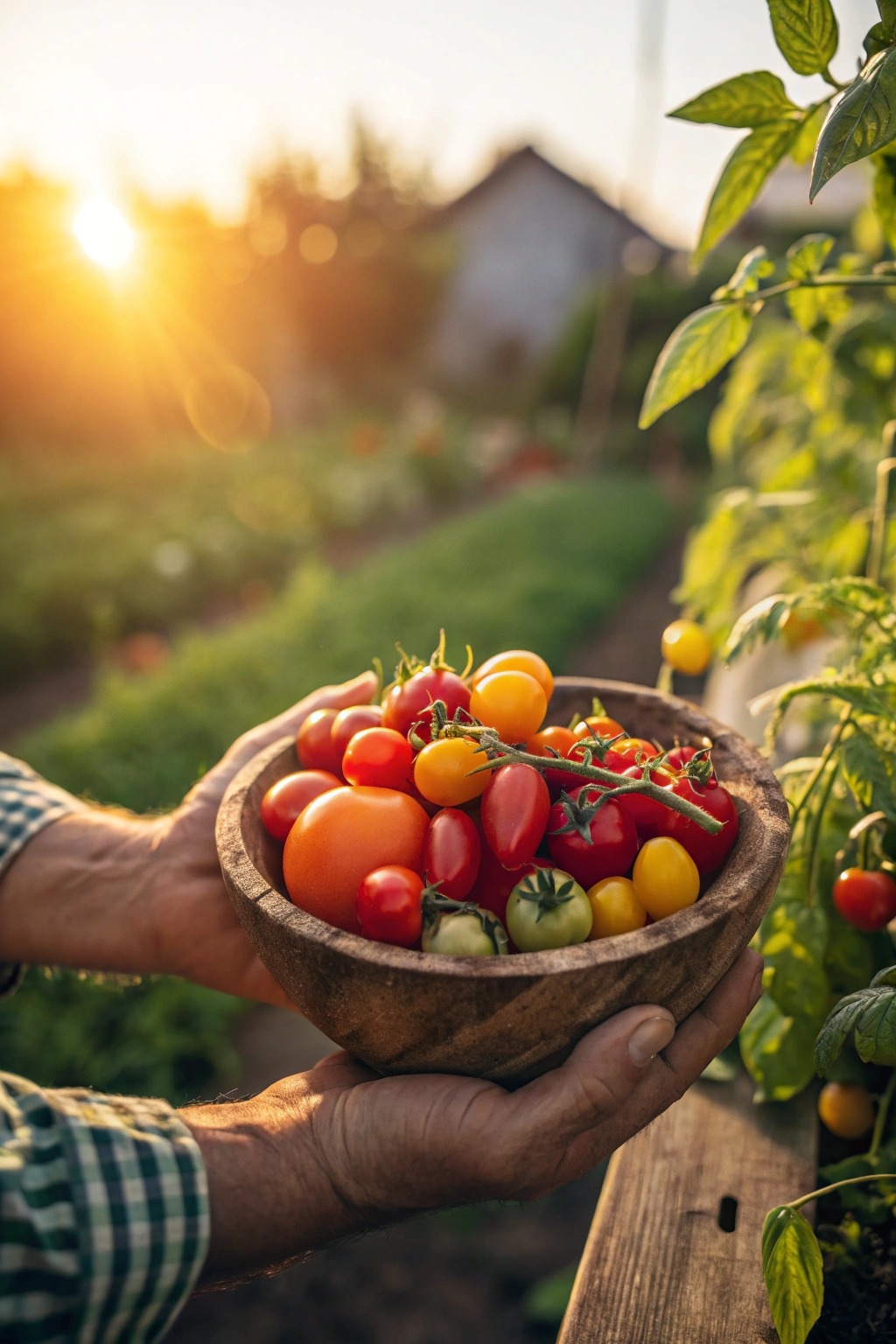Have you ever stumbled upon the magic of growing plants without a speck of dirt in sight? Welcome to the world of hydroponics greenhouse farming – a place where lush greenery thrives indoors, thanks to a clever mix of water and nutrients.
Picture walking into a space brimming with life, all suspended in air or bathing gently in water. If you’re curious about this fantastic soil-less farming method, keep reading. I promise it’s not just science fiction; it’s the future of sustainable agriculture, and it’s fascinating!
A hydroponics greenhouse is your ticket to year-round gardening bliss. Imagine sidestepping the limits of seasons and weather changes to grow fresh vegetables, herbs, and even fruits!
This is possible because you control everything inside the greenhouse – temperature, light, water supply, and every little thing that plants need to flourish. And here’s the neat part: since there are no soil-based pests around, goodbye pesticides! Just healthy food on your table always.
What You Will Discover Here:
- Step-by-step guidance on starting your very own hydroponic garden
- Simple explanations of complex gardening tech
- Smart ways to make your indoor farm thrive
- The real talk on the cost vs. reward for going hydro
- Tips that’ll keep you one step ahead in maintaining your green paradise
Understanding Hydroponic Systems
When I think of a garden, dirt, and soil come to mind. But there’s another way to grow plants that don’t use soil at all. It’s called a hydroponics greenhouse. It’s like giving the plants a bath in water full of food so they grow big and strong without any soil.
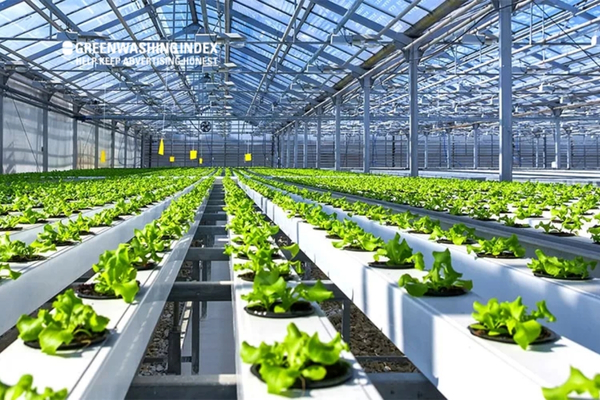
Now, let me explain this idea of hydroponic systems you find in greenhouses. Imagine the roots of plants hanging out in water instead of being buried in dirt. The water has all the nutrients the plants usually get from the soil. Because they’re getting food directly, the plants don’t have to work as hard to grow. This means they can get bigger faster compared to growing in regular gardens.
A hydroponics greenhouse is really smart for several reasons:
- Space-saving: Since we don’t need rows and rows of roots to spread out in search of food, hydroponic greenhouses can be smaller than traditional farms.
- Water-wise: These greenhouses reuse water over and over again, which makes them super good for places where water is scarce.
- Year-round growing: Inside these special greenhouses, it doesn’t matter if it’s snowing or raining outside; plants keep on growing because they have everything they need right there.
- Less pests: Without soil, many bugs that harm plants are left with no place to call home; hence, fewer pesticides are needed.
Now, within this cool world of watery gardens that is a hydroponics greenhouse, there are different ways you can set things up:
- Some systems let plant roots dangle directly into nutrient-rich water.
- Others spray a mist full of nutrients onto the hanging roots.
- Then there are setups where plant roots chill on a sort of wet blanket that keeps them moist and fed at all times.
Each type has its own perks depending on what one needs or what kind of space one has available. But no matter which way you slice it (or plant it!), using a hydroponic system inside a greenhouse is pretty cutting edge for sustainable agriculture — which simply means farming that looks out for Mother Earth as much as possible while still making sure we all get plenty of tasty veggies to eat!
All this fancy talk really boils down to one thing: giving your greens exactly what they need without making too much fuss or fuss about it – neither digging nor weeding is required!
That’s why I think anyone who likes fresh lettuce year-round or just wants an efficient way to farm should look into this nifty method called hydroponics greenhouse gardening! It’s not just smart farming; it’s pretty cool science, too!
Also Read: Solar Power Basics: Unlock Clean Energy Mysteries!
Types of Hydroponic Setups in a Greenhouse Setting
When talking about setting up a hydroponics greenhouse, understanding the different types of hydroponic systems is crucial. This is because each type has its own way of working, and some might fit better with what I want to grow and the space I have. So, let’s break down the main systems you can use in a greenhouse for indoor gardening.
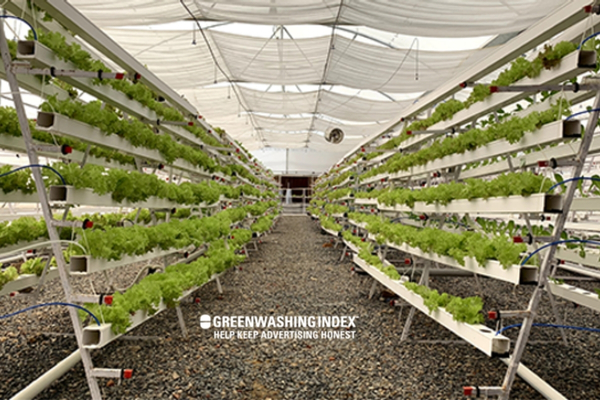
Choosing the Right System
1. Deep Water Culture (DWC): This is one of the simplest kinds of hydroponic setups. In deep water culture, plants are placed in buckets or tubs where their roots reach into nutrient-rich water. An air pump keeps the water moving and gives oxygen to the roots, which helps them take up nutrients.
2. Nutrient Film Technique (NFT): The nutrient film technique involves growing plants in channels that allow a thin stream, or “film,” of nutrient solution to pass over their roots constantly. This system works well because it gives roots plenty of oxygen and just enough nutrients without drowning them.
3. Ebb and Flow (Flood and Drain): Ebb and flow systems fill up grow trays with nutrient solution at specific times before draining all that liquid back into a reservoir. It’s like giving plants meal times for feeding! These setups are great for flexibility because I can adjust how often flooding happens based on what my plants need.
4. Drip Systems: As you might guess from the name, drip systems use small drip emitters to deliver water and nutrients right where each plant needs it – at its base near the roots! This system is efficient in giving every plant individual attention when it comes to feeding.
5 Aeroponics: With aeroponics, no soil or standing water is involved – instead, plant roots hang free in an enclosure with air all around them while being periodically misted with nutrient solution. It’s high-tech gardening that makes sure every bit of root gets nutrition without staying wet too long.
When picking out which hydroponic system I want for my greenhouse, there are a few things I need to think about:
- The size of my greenhouse.
- What kind of plants am I planning to grow?
- How much time can I give every day for maintenance?
- My budget since some systems may cost more than others.
Choosing wisely means mixing what my plants will love with what works best for me as well! All these types help create sustainable agriculture, no matter where they’re set up – but getting that match right makes all the difference between good results and great ones inside my hydroponics greenhouse!
Also Read: Mattress Disposal: Easy Steps for Eco-Friendly Solutions
Optimizing Your Hydroponics Greenhouse
When I think about getting the most out of a hydroponics greenhouse, there’s one thing that jumps to mind before anything else: climate control. It’s all about creating a perfect little world for the plants where they can thrive without soil.
This type of indoor gardening is part of sustainable agriculture called soilless cultivation. And even though we’re working with advanced greenhouse technology, making it work best is quite straightforward – let me walk you through it.
Climate Control
To make sure my plants are happy and growing well in my hydroponics greenhouse, I focs a lot on controlling the climate. This means I keep an eye on a few important things to create the best space for my plants to thrive.
Here’s how I do it:
- Temperature: Keeping the right temperature is key. If it’s too hot or cold, the plants won’t grow well. Generally, most plants like it when it’s between 65 and 80°F (18°C – 27°C). To manage this, I use heaters for cold days and fans or vents for hot days.
- Humidity: Plants need moisture in the air, but not too much. Ideal humidity usually falls between 40% and 70%. I use humidifiers if the air gets too dry or dehumidifiers if it gets too wet. This also helps prevent mold or diseases.
- Air Circulation: Fresh air is good for my plants because they need carbon dioxide to grow. That’s why having a steady flow of air is vital. For this, I have fans placed around that gently move air around without stressing my plants out.
- CO2 Levels: Adding more carbon dioxide can sometimes help my plants grow faster since they use CO2 during photosynthesis—I’m talking about how they turn light into food for themselves! But this needs careful managing with special machines so that there’s just enough CO2 without overdoing it.
So, by checking these things often and making changes when needed, I can keep an ideal growth environment inside the hydroponics greenhouse where all sorts of veggies and herbs can grow big and strong!
Lighting in Your Hydroponic System
When you step into a hydroponics greenhouse, one of the first things you’ll notice is all those lights shining down on the plants—this isn’t just to make things look bright! Proper lighting is incredibly important because plants rely on light much like we depend on food—it’s their energy source.
Let me explain why lights are such a big deal:
- Mimicking Sunlight: In nature, sunlight gives different types of light that are crucial at various stages of plant growth—there’s blue light that helps with leafy growth and red light that encourages flowering. Indoors, under artificial lights, we try to imitate sunlight so our plants can have a healthy life cycle, from baby sprouts to full-grown plants.
- Intensity & Duration: Light intensity counts—how bright should these lights be? Too little, and my green friends might grow slowly or not at all; too much could burn them or waste energy. So, finding that sweet spot where intensity meets their needs without going overboard is essential.
Also important? How long your lights stay on: normally, between 14 and 16 hours per day is plenty for many vegetables, but some might need more or less. That’s why timing devices come in handy—I set them up once, and then they turn off/on automatically every day!
My goal here is clear: give each plant enough quality light while keeping energy costs low—that way, both Mother Nature and I will smile seeing our indoor garden bloom beautifully!
Also Read: Master Smell-Free Apartment Composting: An Ultimate Guide
The Advantages & Challenges
When it comes to gardening, I often weigh the pros against the cons. The same goes for running a hydroponics greenhouse. Let’s dive into what makes it exceptional and what hurdles you might come across.
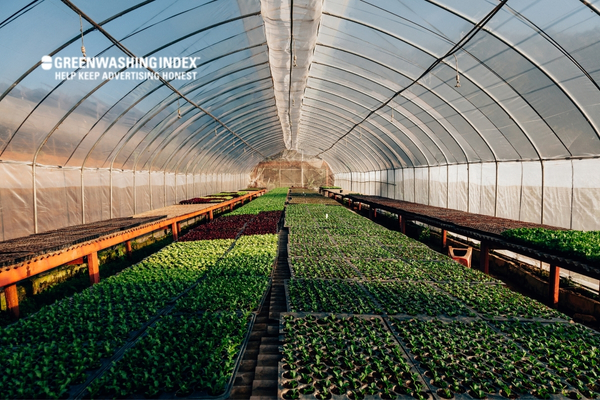
Why Go Hydro? The Perks
If you’re thinking about starting or switching to a hydroponics greenhouse, let me tell you, there are some really good reasons to do so. Here’s why it’s a great choice:
- No Soil Needed: This is the big one. Hydroponics means you’re growing plants without soil. You might be thinking, “How do plants grow without soil?” They just need water, nutrients, and a little support to hold them up – that’s what hydroponic systems offer.
- Save Water: Surprisingly, even though it’s all about growing with water, a hydroponics greenhouse uses less water than traditional gardening does. The system recycles water over and over, which means we’re not wasting any.
- More Control: Controlling what your plants get is easier in hydroponics than with soil gardening, where things can be more unpredictable. You can control the nutrients directly and make sure every plant gets exactly what it needs to grow big and healthy.
- Grow All Year Round: No matter the season outside, your plants keep on growing inside the greenhouse because they have their perfect little environment that doesn’t rely on natural weather patterns.
- Space Saver: Since we don’t use bulky soil and because hydroponic systems can be set up vertically, they allow us to grow a lot more in much less space!
- Less Pests and Weeds: Have you ever fought off bugs or pulled out weeds for hours? Say goodbye to most of that! Hydroponic greenhouses cut down quite a bit on pests and almost get rid of weeds altogether since there’s no soil for them to live in.
- Faster Growth: Plants often grow faster in hydroponic greenhouses since they don’t have to work as hard pulling nutrients out of the soil. They’ve got everything they need right at their roots!
These perks can turn indoor gardening into an exciting adventure with real benefits for food production or even just having beautiful plants around.
Facing Facts — The Challenges
Now let’s talk straight realities here: operating a hydroponics greenhouse isn’t all smooth sailing:
- Start-up Costs: Getting started could be pricy depending on how complex your setup is going to be – think equipment like pumps, reservoirs, and lights (if you need them), not forgetting those important nutrients for your plant buddies.
- Technical Know-How Required: It does take some learning; working with greenhouse technology isn’t as straightforward as planting in the dirt – understanding the science behind nutrient mixtures and how different systems operate like NFT (Nutrient Film Technique) or DWC (Deep Water Culture) takes time.
- Constant Monitoring: Your new garden will need lots of attention; keeping an eye on nutrient levels and pH balance becomes part of your daily routine when using sustainable agriculture methods like these.
- System Maintenance: The setup needs regular cleaning to prevent problems like algae growth or system blockages, which could harm your plants if left unchecked.
- Power Dependency: Your entire system relies heavily on power for stuff like maintaining water flow—so power cuts could spell disaster unless you’re prepared with backups such as generators.
- Pest Control Still Needed: While fewer pests are definitely an advantage mentioned before – that doesn’t mean “no pests.” Some may still find their way into your oasis, which means tough decisions about managing them sustainably—watch out, especially if introducing organic pest controls into this environment!
By weighing these challenges against the incredible advantages when we talk about hydroponic greenhouses, it’s clear that while there might be some hurdles along the way, those lush greens without a speck of dirt might just be worth tackling!
Also Read: Greenhouse Gardening: Your Ultimate Guide to Aquaponics
Advanced Techniques for A Successful Harvest
A hydroponics greenhouse is an amazing place. It’s like a magic garden where plants grow without soil. Think of it as planting in water. But not just any water – it’s full of special food for the plants so they can grow big and strong. Today, we are going to talk about how to make this plant food, which is called a nutrient solution.
Nutrient Solutions Masterclass
If you want your plants to do well in a hydroponics greenhouse, the nutrient solution is key. This is the mix of water and nutrients that feed your plants’ roots directly.
- Start with pure water: The first step is making sure your water is clean. If it’s not, your plants might not grow well because they could be getting harmed by stuff that shouldn’t be there. So, you might need to filter your water or get it tested to see if it’s pure.
- Pick the right nutrients: Next up, you need the perfect blend of plant food – these are things like nitrogen, phosphorus, potassium, and other minerals that all plants need to live.
- Get the amounts right: Too much or too little of any nutrient can cause problems – like burnt leaves or weak growth – so precision matters here!
- Mixing it all together: Once you have all your ingredients ready to go, carefully measure them out and stir them into your water until they are fully dissolved.
- Check pH levels: Plants can only eat their food if the acidity level (pH) of the solution is just right; typically, this means slightly acidic (around 5-6 on a scale from 0-14, with 7 being neutral). Use simple tools like pH strips or digital meters to check this.
- Adjust as needed: After checking pH levels and seeing where they’re at, adjust using acids (like phosphoric acid) or bases (like potassium hydroxide acid) if necessary.
- Keep an eye on EC/TDS readings: EC stands for electrical conductivity, which measures how many nutrients are in there, while TDS gives us the total dissolved solids count; both help us understand nutrient strength without guessing.
- Change it up for different crops: Not all plants like eating exactly the same thing! Leafy greens might prefer something different than tomatoes do; learn what works best for each type!
- Refresh regularly: Over time, as plants drink their mix-up, some nutrients disappear faster than others, leading to imbalance issues unless refreshed often enough, which includes replacing entire batches occasionally to maintain consistent and healthy growth throughout seasons cycles life stages!
By following these steps carefully and adjusting when needed – whether adding more calcium for crunchy lettuce or lowering nitrogen so flowers don’t get too leafy – anyone should be able to pull off pretty impressive harvests no matter what kind of crop chosen within their own little slice nature indoors under control environment hydroponics greenhouse!
Also Read: Styrofoam Disposal: Easy Ways to Reduce Environmental Impact
Maintenance & Monitoring Of Your Hydroponic Greenhouse
Taking care of a hydroponics greenhouse isn’t just important – it’s essential to the health and yield of your plants. Just like a car needs oil changes to keep running smoothly, your hydroponic system needs regular check-ups to ensure that everything is working properly. So, let’s talk about the routine tasks that keep this soilless wonder ticking.
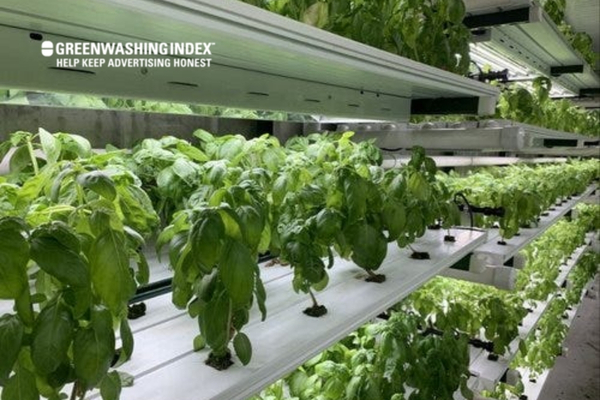
Keeping Your Garden Pristine
To start off, think of your hydroponic garden as a living machine. Every part has a role, from the water pumps to the smallest tubing. To maintain an efficient system, you’ve got to pay attention to a few key areas regularly.
First, always keep an eye on your water. Water in a hydroponics greenhouse gets recirculated, which means it can build up stuff you don’t want, like salts or plant waste, over time. You’ll need to check the pH level often because if it swings too high or too low, your plants won’t be happy campers. Also, test the nutrient solution’s strength with something called an EC meter; if it’s too strong or weak, adjust as needed.
Second, cleanliness is next to godliness in your green oasis! Regularly clean and sterilize all equipment – buckets, trays, pipes – every last bit! This helps prevent any nasty bugs or diseases from crashing your plant party.
Third, make sure that all the drip lines and sprinklers are working right. If they get clogged or break down, parts of your garden could turn into a dusty old desert while others are flooded like swampland!
Fourth, have a look at those air and water pumps since they keep things flowing smoothly all day long. Clean filters as recommended by manufacturers; sometimes debris can slow them down or even totally stop them from working.
And lastly, don’t forget about keeping an eye out for pests or diseases on your plants themselves! Catching anything early means you can deal with it before it spreads badly.
Remembering these simple yet crucial steps will help ensure that your investment stays productive and proves fruitful season after season in sustainable agriculture through indoor gardening within our very own hydroponics greenhouse!
Cost-Benefit Analysis of A Hydroponic Investment
In the world of indoor gardening and sustainable agriculture, taking a close look at the cost against the benefits of a hydroponics greenhouse is essential. So, let’s dive into whether this soilless cultivation method is worth your investment.
Is It Worth the Greens?
When it comes to setting up a hydroponics greenhouse, one of the biggest things on my mind was whether or not the money I put in would pay off. I’m sure a lot of folks out there are wondering if forking out all that cash at the start is going to be worth it over time. Let me tell you what I found out when I did some digging and number crunching.
Initial Costs
First up, let’s look at what you’ll typically spend when you first get into hydroponics greenhouse farming:
- Setup Equipment: This includes tanks, pumps, lights, growing trays or channels, and sometimes control systems that keep everything, like pH and nutrients, in check.
- Construction: If you’re building from scratch – think of costs for materials like framing, panels (the clear walls), and all those bits and bobs that hold it together.
- Plants & Seeds: Whether you’re starting seedlings or buying plants that are already going strong.
- Nutrients & Solutions: These are essential because, in hydroponics, we ditch the soil and feed plants directly with nutrient-rich solutions.
Sure, adding all this up might scare you a bit. It can be quite a bit of green! But hang tight; there’s another side to this coin.
Long-Term Benefits
Now let’s get into why your initial investment could really start showing its green thumbs before too long:
- Less Water Use: Compared to traditional soil farming, some say hydroponics can save between 70% to 90% on water. Over time, if water prices go up or if there’s just less of it around – saving water will save money.
- Faster Growth: Plants often grow quicker since they get exactly what they need right when they need it. This means more harvest cycles per year; basically, more chances to sell your veggies or fruits!
- Year-Round Growing: Since everything’s under control inside your greenhouse – cold winter doesn’t mean jack! You can keep growing whatever season it is outside.
- Fewer Pests & Diseases: Without any soil for bugs and nasty plant diseases to live in – guess what? You’ll likely spend less on pesticides, which aren’t cheap (and aren’t too friendly for Mother Nature either).
- No Soil Needed: No need to buy truckloads of topsoil now or ever again, really – this is good news for your wallet, as well as places where good land is hard to come by.
- Higher Yield per Area: When your plants are packed cozy but get all their growing room vertically – like apartment living but for veggies – it means more output in less space compared with traditional farming.
So when I put on my thinking cap, is investing in a hydroponics greenhouse worth the greens? Well, based on what I’ve seen – yes! At first glance, my eyes popped at how much cash had to go down upfront; looking down the road, these greenhouses might just turn those expenses into grand old trees of savings, especially if being kinder to our planet adds an extra kick in your step like mine!
Also Read: DIY Composting Toilet Guide: Build Cheap, Eco-Friendly Now!
Safety Measures & Regulations
In a hydroponics greenhouse, we’re focusing on a powerful mix of technology and nature. This means we need to be very careful to keep both people and plants safe. To do this, there are some important safety measures that have become standard rules for operating these types of greenhouses.
Standard Protocols for Safe Operations
When talking about hydroponics greenhouses, keeping plants safe is not the only concern. It’s also about making sure everyone who steps into the greenhouse stays safe and the environment is protected. To ensure this, there are standard safety measures closely tied to regulations that anyone working with or around a hydroponics greenhouse should know.
First things first, here’s what you need to keep in mind:
- Know Your Equipment: Every piece of equipment should have a manual or set of instructions. Make sure you read and understand how to use each piece safely. This goes for pumps, lighting systems, and any electrical gear linked to your hydroponic systems.
- Chemical Safety: In a hydroponics setup, nutrients are given directly to plants through water. These nutrients often come from chemicals that can be harmful if touched or inhaled. Always use gloves and masks when handling these substances. Also, store them away from areas where they could be accidentally spilled or reached by children and pets.
- Electrical Concerns: Water and electricity are a risky combination—a single slip could result in an accident. Ensure all wiring is up to code and that there are no exposed wires anywhere near your plants or water supply.
- Water Areas: Slips and falls are common around wet areas. Keep floors as dry as possible by using mats in high-water-usage areas and clean up spills immediately to prevent falls.
- Fire Safety: Greenhouses have conditions that can easily lead to fires—lots of oxygen produced by plants and possibly flammable materials like plastics used for tubing or covers for grow beds. Make sure fire extinguishers are available at key points within your greenhouse.
- Emergency Procedures: Know what to do in case of an emergency—it might be related to health, fire, chemical spills, or equipment failure—and have clear procedures laid out for each scenario.
- Training: If you have others helping you out with your indoor garden operation inside the hydroponics greenhouse, provide adequate training on safety measures they need to follow without assuming they already know what to do because accidents happen most when people aren’t prepared adequately.
Having these protocols in place isn’t just about ticking off boxes on a checklist—it’s about creating a space where safety comes first, ensuring healthy growth not only for your plants but also fostering a secure environment where people can work without worry!
Remembering and implementing these straightforward points will go a long way in maintaining a successful and safe operation within your hydroponics greenhouse!
FAQs
What crops are best suited for growth in a hydroponics greenhouse?
Leafy greens like lettuce and herbs, as well as tomatoes, cucumbers, and strawberries, thrive in a hydroponics greenhouse.
How often should nutrient solutions be changed in my system?
Change your nutrient solution every two to three weeks to ensure plants get all the nutrients they need.
Can I convert my traditional greenhouse into a hydroponic one?
Yes, with the right set-up and equipment, you can transition your traditional greenhouse to a hydroponics system.
Conclusion
Wrapping things up, a hydroponics greenhouse represents the pinnacle of soilless cultivation – a true marvel in sustainable agriculture and indoor gardening. It’s clear that while there are hurdles to overcome, the benefits of embracing such cutting-edge greenhouse technology are immense.
By tuning into the needs of various hydroponic systems, optimizing conditions within your green space, and committing to ongoing education and maintenance, one can achieve remarkable results. I’ve walked through every facet, from choosing your system to balancing nutrients and maintaining your setup. The merge of precise science with the art of gardening creates a satisfying journey toward food production efficiency.
Key Takeaway Points
- A hydroponics greenhouse enables efficient, sustainable plant growth.
- Different hydroponic setups cater to diverse plant needs.
- Climate control and lighting are crucial for optimal yields.
- Hydroponics offers environmental and production benefits.
- Challenges include system management and initial costs.
- Proper nutrient solutions enhance plant quality.
- Maintenance ensures the longevity and productivity of your setup.

